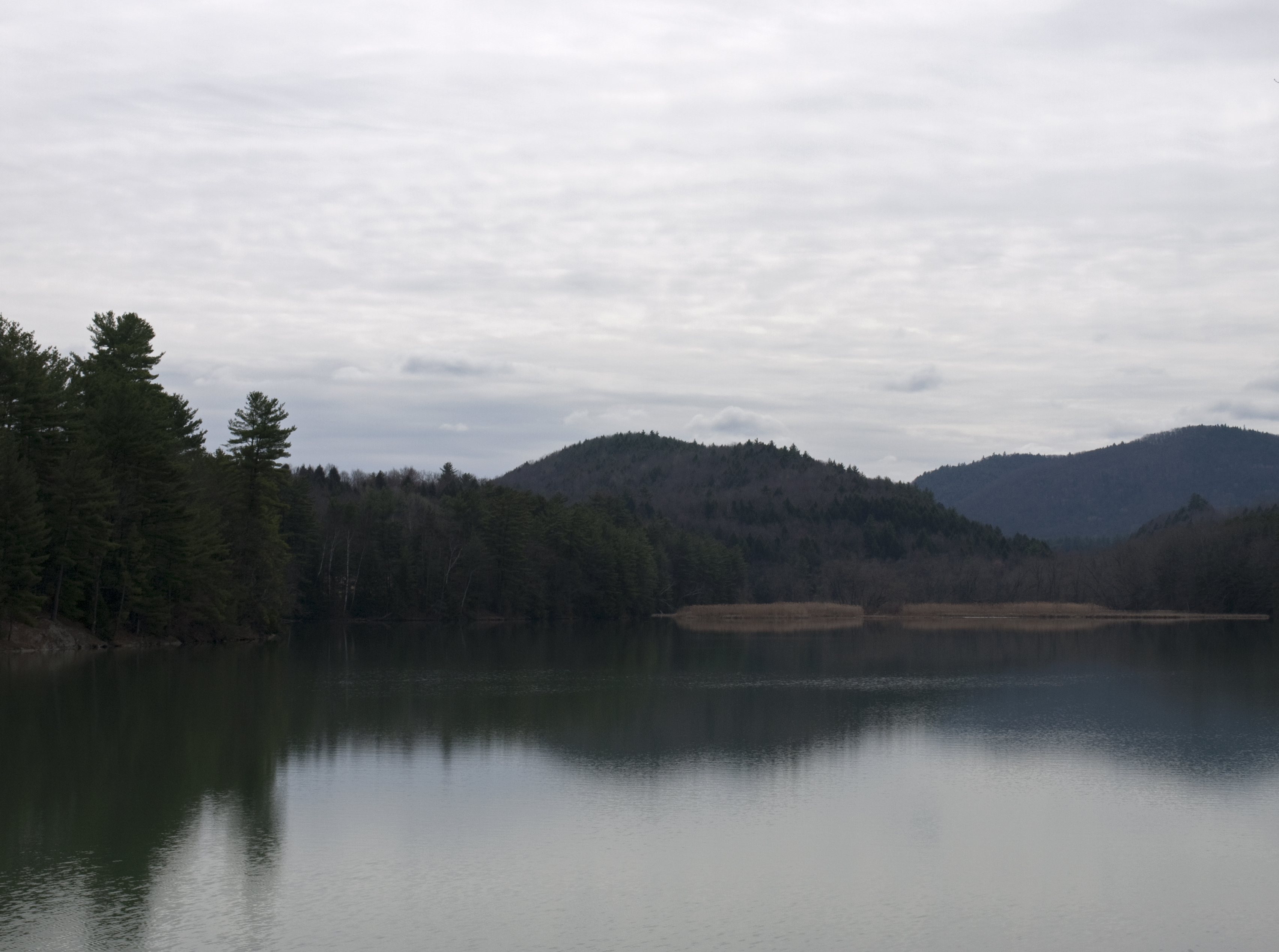|
Ascutney Mill Dam
Ascutney Mill Dam, also known as the Windsor Upper Dam and the Mill Pond Dam, is an arch-gravity dam which is one of the oldest and among the earliest storage dams in the United States. It is made of cut granite and is located in Windsor, Vermont in Windsor County near the Connecticut River, where it functioned as a source of hydropower and, later, hydroelectric power. It is on the ASCE list of historic civil engineering landmarks since 1970 and is listed on the National Register of Historic Places (as Ascutney Mill Dam Historic District) since January 09, 2007. The dam is built in the valley of the Mill Brook, a right tributary of the Connecticut River. The pond above the dam is known as the Mill Pond. The Ascutney Mill Dam Company was formed to build the dam. Construction began in June 1834, and was finished in November. The purpose of the dam was to regulate seasonal water flow and provide hydropower for nearby sawmills and gristmills, which previously could not operate ... [...More Info...] [...Related Items...] OR: [Wikipedia] [Google] [Baidu] |
Windsor, Vermont
Windsor is a town in Windsor County, Vermont, United States. As the "Birthplace of Vermont", the town is where the Constitution of Vermont was adopted in 1777, thus marking the founding of the Vermont Republic, a sovereign state until 1791, when Vermont joined the United States. Over much of its history, Windsor was home to a variety of manufacturing enterprises. Its population was 3,559 at the 2020 census. History One of the New Hampshire grants, Windsor was chartered as a town on July 6, 1761, by colonial governor Benning Wentworth. It was first settled in August 1764 by Captain Steele Smith and his family from Farmington, Connecticut. In 1777, the signers of the Constitution of the Vermont Republic met at Old Constitution House, a tavern at the time, to declare independence from the Great Britain (the Vermont Republic would not become a state until 1791). In 1820, it was the state's largest town, a thriving center for trade and agriculture. In 1835, the first dam was built ... [...More Info...] [...Related Items...] OR: [Wikipedia] [Google] [Baidu] |
Waltham, Massachusetts
Waltham ( ) is a city in Middlesex County, Massachusetts, United States, and was an early center for the labor movement as well as a major contributor to the American Industrial Revolution. The original home of the Boston Manufacturing Company, the city was a prototype for 19th century industrial city planning, spawning what became known as the Waltham-Lowell system of labor and production. The city is now a center for research and higher education, home to Brandeis University and Bentley University as well as industrial powerhouse Raytheon Technologies. The population was 65,218 at the census in 2020. Waltham has been called "watch city" because of its association with the watch industry. Waltham Watch Company opened its factory in Waltham in 1854 and was the first company to make watches on an assembly line. It won the gold medal in 1876 at the Philadelphia Centennial Exposition. The company produced over 35 million watches, clocks and instruments before it closed in 1957. Histo ... [...More Info...] [...Related Items...] OR: [Wikipedia] [Google] [Baidu] |
Dams Completed In The 18th Century
A dam is a barrier that stops or restricts the flow of surface water or underground streams. Reservoirs created by dams not only suppress floods but also provide water for activities such as irrigation, tap water, human consumption, Industrial water, industrial use, aquaculture, and navigability. Hydropower is often used in conjunction with dams to generate electricity. A dam can also be used to collect or store water which can be evenly distributed between locations. Dams generally serve the primary purpose of retaining water, while other structures such as floodgates or levees (also known as Dike (construction), dikes) are used to manage or prevent water flow into specific land regions. The earliest known dam is the Jawa Dam (Jordan), Jawa Dam in Jordan, dating to 3,000 BC. The word ''dam'' can be traced back to Middle English, and before that, from Middle Dutch, as seen in the names of many old cities, such as Amsterdam and Rotterdam. History Ancient dams Early dam build ... [...More Info...] [...Related Items...] OR: [Wikipedia] [Google] [Baidu] |


